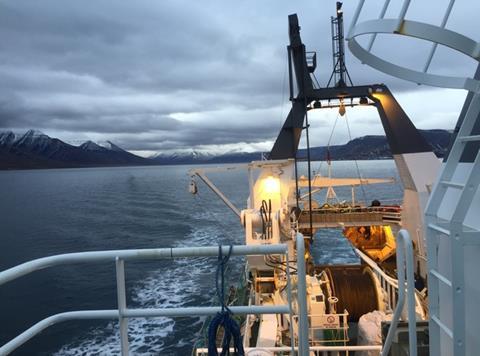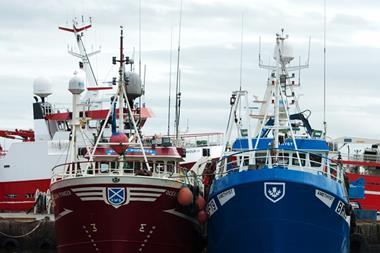
There is nothing like standing on the edge of a glacier, and hearing the deafening crack as it collapses into the sea, to ram home the reality of climate change. Donald Trump might not believe climate change actually exists, but after visiting the Norwegian archipelago of Svalbard and seeing first hand just how quickly its glaciers are retreating, I’m pretty convinced.
And it’s not just the glaciers that are melting. Huge areas of polar ice are disappearing from the waters around the islands every year, and scientists at the University Centre in Svalbard (UNIS) – the world’s foremost institution of Arctic science – told me this is arguably having a bigger impact on the local ecology than receding glaciers.
It is also throwing up some new opportunities and challenges for Norway and its fishing industry.
I visited Svalbard less than six months after Greenpeace launched a campaign warning that “destructive” cod bottom trawlers were moving further north in the Barents Sea, invading waters around the archipelago that were previously covered by ice, and threatening to destroy vulnerable ecosystems.
The report had sent shockwaves through the UK seafood sector, and the Norwegian Seafood Council invited me and a group of other journalists to see first hand how the concerns raised by Greenpeace are being addressed, and learn more about how Norway is adapting to climate change and its impact on food supply chain.
It’s easy to be cynical about carefully orchestrated press trips like this, but I was impressed with what I saw. By the time I landed in Longyearbyen, the archipelago’s administrative centre – and, at 78°N, the world’s northernmost town – Norway’s catch sector had already struck a deal with the group to stay out of previously unfished areas until scientists have conducted more research – a development you can read more about in our Focus on Fish this week.
What I witnessed on the trip showed Norway takes sustainability and climate change very seriously. I boarded a shrimp vessel with the Norwegian Coastguard, which carefully monitors and inspects fishing activity using boats, helicopters and even planes fitted with cameras.
I met Dr Knut Sunnanå, a senior research scientist at the Institute of Marine Research Norway (IMR), who had just returned from a marine survey of the Northern Barents Sea on Arctic research vessel Helmer Hansen. I flew to remote research town Ny-Ålesund to visit the Norwegian Polar Institute, which advises Norwegian authorities on matters concerning polar environmental management.
I learned that while Norway might not yet have all the answers to dealing with a rapidly changing environment, it does have an integrated and collaborative approach to these problems that means government, industry and scientists work together to decide the best way forward.
It is an approach the UK, and indeed the rest of the world, could learn from. Let’s hope Donald Trump schedules a visit to Svalbard once he takes up office in the White House.



















No comments yet